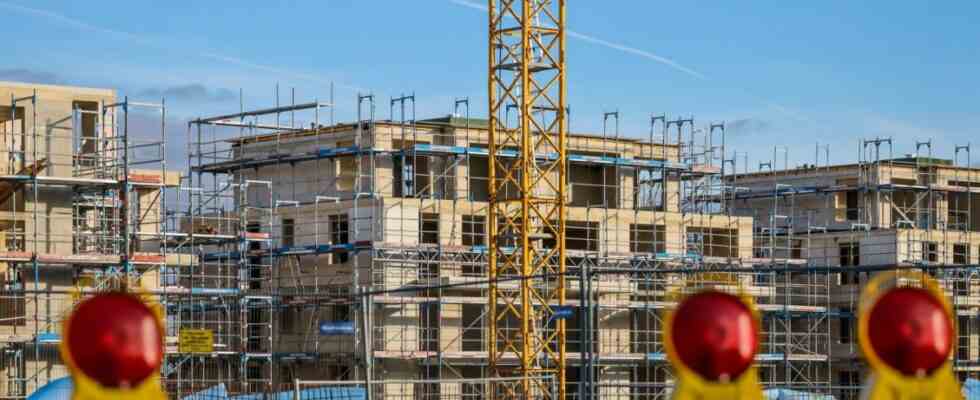On the construction site, things rarely go as planned. And above all, things are not going as planned. An experience that Federal Building Minister Klara Geywitz (SPD) is making. Their plan actually envisaged: 400,000 new apartments per year, 100,000 of them as social housing. This is what the federal government has decided to do and created a separate building ministry with a budget worth billions. Nevertheless, the new building goal does not work, not in the past year and probably even less in the one that has just begun. Geywitz now admits that: “I don’t assume that the number of 400,000 apartments will be achievable in 2022 and 2023,” she told the Internet portal Web.de in an interview. The goal remains “to get to this number in 2024 and 2025”.
There is a lack of hundreds of thousands of apartments in Germany, especially larger and affordable ones in the metropolitan areas. Yet far too little is being built. The problem will not be solved with “more billions for housing construction alone”, as Geywitz further admits. “We need greater digitization of the construction industry and more industrial prefabrication, as is already known from car manufacturing,” said the politician, adding: “Of course we also need more skilled workers.” Geywitz is also politically acknowledging what has been becoming increasingly clear across the country for months: housing construction is deep in crisis.
Interest rates for construction financing have almost quadrupled in the past year, while construction prices have continued to rise unabated. That’s how it was at the end of 2022 almost 17 percent more expensiveto build a house than a year earlier. In addition, the minimum requirements for new buildings have been tightened to the Efficiency House 55 standard. That might cause additional costs. At the same time, it is becoming increasingly clear that the trend reversal in the purchase prices for residential real estate is now here: between July and September, the prices achieved fell compared to the second quarter – it was the first decline since the beginning of 2010. And this downward movement could intensify at the end of the year to have.
Increasing costs, higher requirements, falling revenues – these are not very attractive prospects for construction professionals. Accordingly the number of building permits is falling for months, as have the price-adjusted ones Orders received in the construction industry. On the other hand, what continues to grow is the so-called construction backlog, i.e. the number of residential buildings that have been approved but not built. In particular, the number of available social housing units is falling. There were just 1.1 million nationwide – 20 years ago the stock was still around 2.6 million apartments.
Gloomy mood in the real estate industry
In the real estate industry, the belief that something will change quickly is now fading. While real estate and construction companies were initially very enthusiastic about the fact that the traffic light coalition created its own building ministry and thus politically upgraded the topic, there is now disillusionment. The federal government is doing too little to achieve its housing goal, said Axel Gedaschko, President of the GdW Association of Large Landlords, at the weekend. “The housing shortage will therefore last for at least another ten years.” The federal states and municipalities should therefore make all plots of land available that can be built on, and the federal government must support construction with grants and low-interest loans.
An internal survey by the Federal Association of Independent Real Estate and Housing Companies (BFW) recently illustrated how gloomy the mood has become. Instead of the planned around 150,000 new apartments, the medium-sized member companies probably only want to tackle around 65,000 this year, and in 2024 the number will probably drop to a good 50,000. According to their own statements, the companies in the BFW account for about half of all housing construction in the state.
Germany already has a massive housing problem, especially in the economically strong metropolitan areas: It is becoming increasingly difficult, especially for families and people with medium and low incomes, to find suitable and, above all, affordable housing. According to data from the Federal Statistical Office, as early as 2021, around one in eight tenant households was spending more than 40 percent of its net income on housing – and was therefore financially overwhelmed. More recent data is not yet available, but it can be assumed that the situation will have deteriorated further in 2022.

